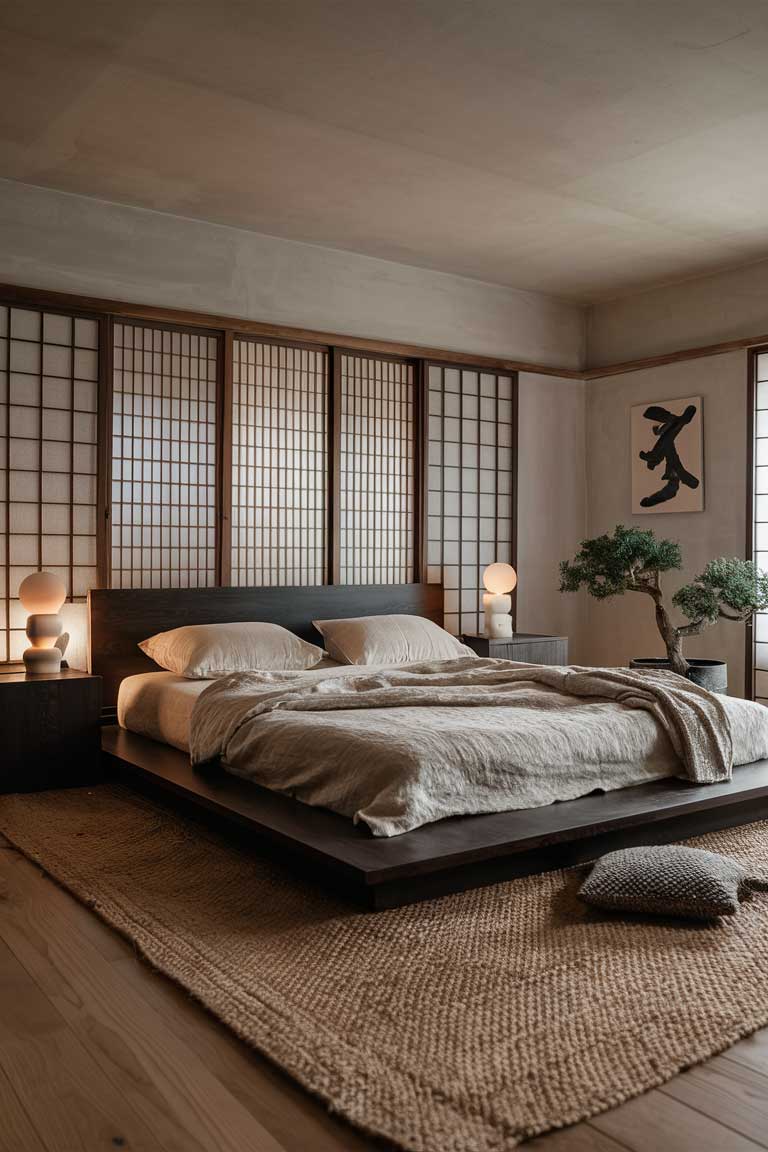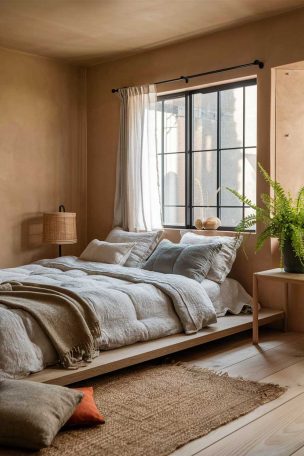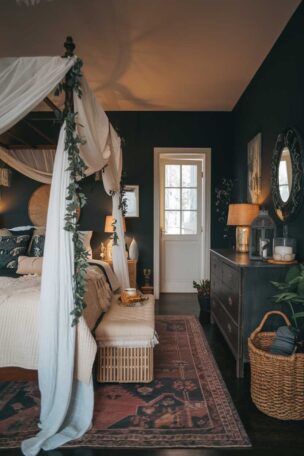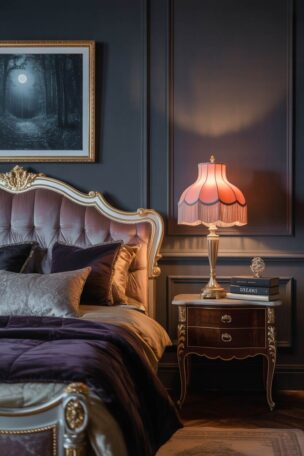In the world of interior design, a style has been captivating homeowners and designers alike: the Japandi aesthetic.
This fusion of Japanese and Scandinavian design principles has given birth to a uniquely serene and sophisticated look.
Today, we’re diving deep into the world of the Japandi dark wood bedroom, exploring how this style can transform your sleeping space into a haven of tranquility and elegance.
The Essence of Japandi Dark Wood Bedrooms
At its core, the Japandi style is all about finding harmony between modern Scandinavian design and traditional Japanese aesthetics.
It’s a delicate balance of form and function, minimalism and warmth.
When we introduce dark wood elements, we elevate this style to new heights of sophistication.
Color Palette
The foundation of any Japandi dark wood bedroom is its color palette. We’re talking deep, rich hues that create a cocooning effect.
Think charcoal walls, navy blue accents, and the warm tones of dark wood furniture.
But it’s not all about darkness – we balance these deep colors with muted earth tones to keep the space from feeling too heavy.
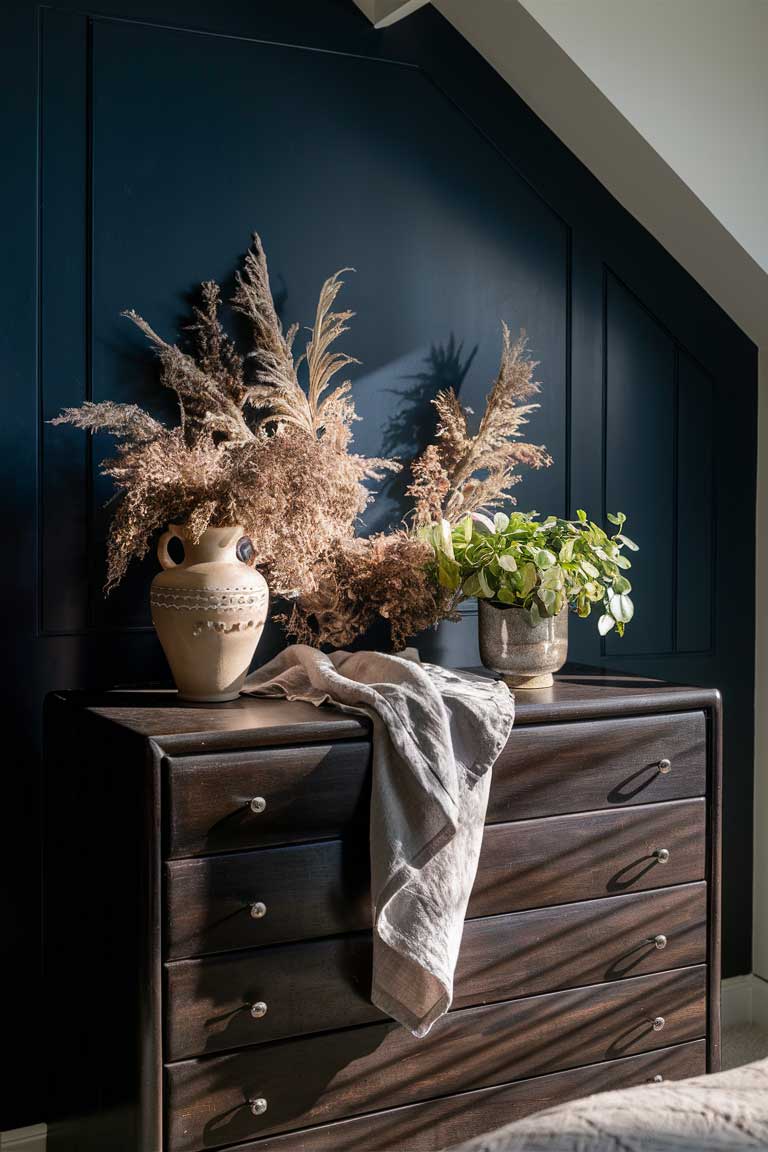
Materials
Natural materials are the bread and butter of Japandi design.
In a dark wood bedroom, we primarily work with woods like walnut, ebony, and mahogany.
These rich, dark tones create a sense of grounding and warmth.
In lighter shades, we incorporate natural fibers like linen, wool, and bamboo to soften the look.

Key Elements of Japandi Dark Wood Bedrooms
Now, let’s dive into the specific elements that make up a Japandi dark wood bedroom.
Each piece is crucial in creating that perfect balance of zen minimalism and cozy comfort.
Furniture
Of course, the bed is the star of any bedroom.
In Japandi design, we favor low-profile bed frames that keep the overall look grounded and peaceful.
Platform beds with clean lines are popular, as are futons placed directly on tatami mats for a more traditional Japanese feel.
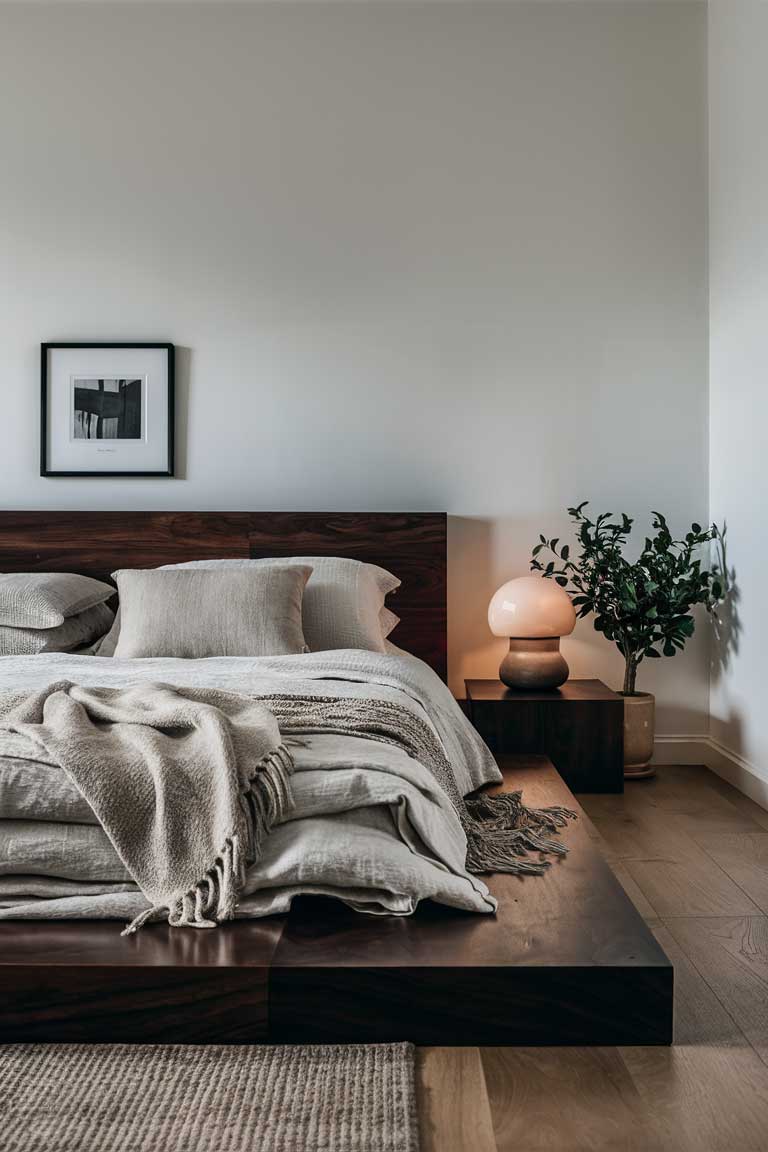
When it comes to storage, think minimalist dressers and nightstands.
Floating designs can create an illusion of more space, perfect for smaller bedrooms.
Multi-functional pieces are also a great choice, embodying the practical spirit of both Japanese and Scandinavian design.
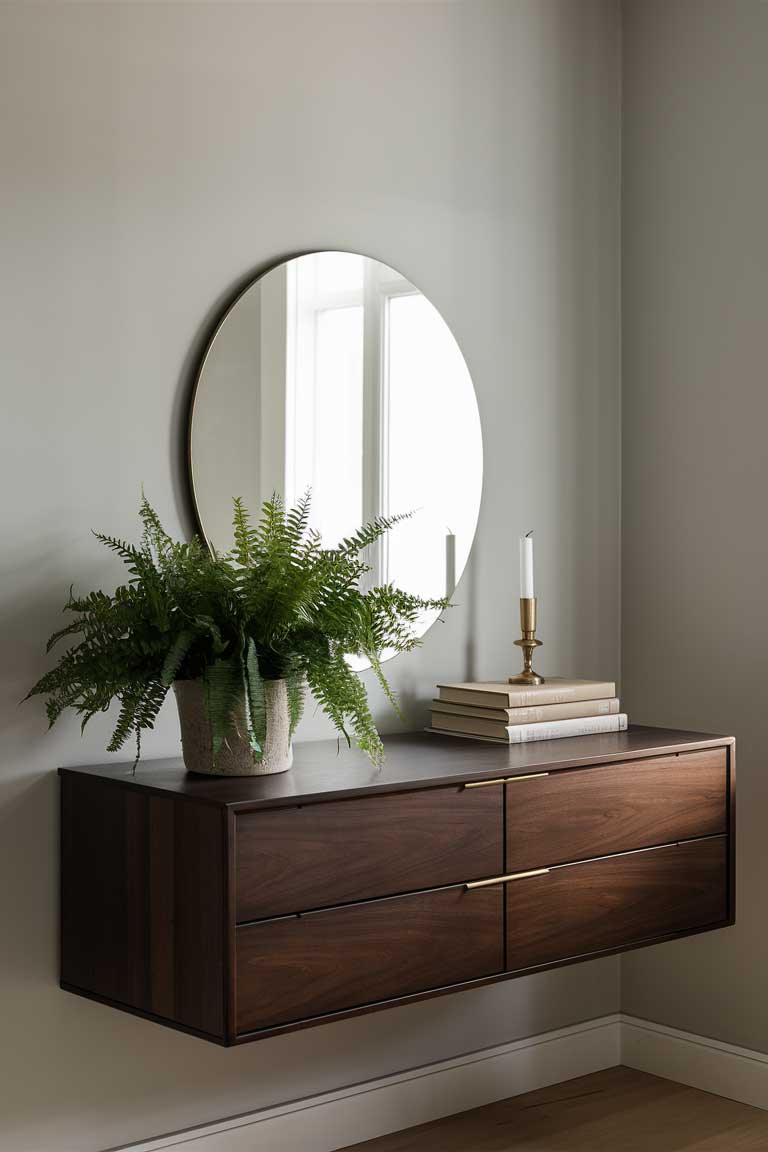
Wall Treatments
Wall treatments in a Japandi dark wood bedroom can set the tone for the entire space.
One stunning option is to create an accent wall using dark wood slats.
These can be arranged horizontally for a modern look or vertically to draw the eye upward and create the illusion of height.
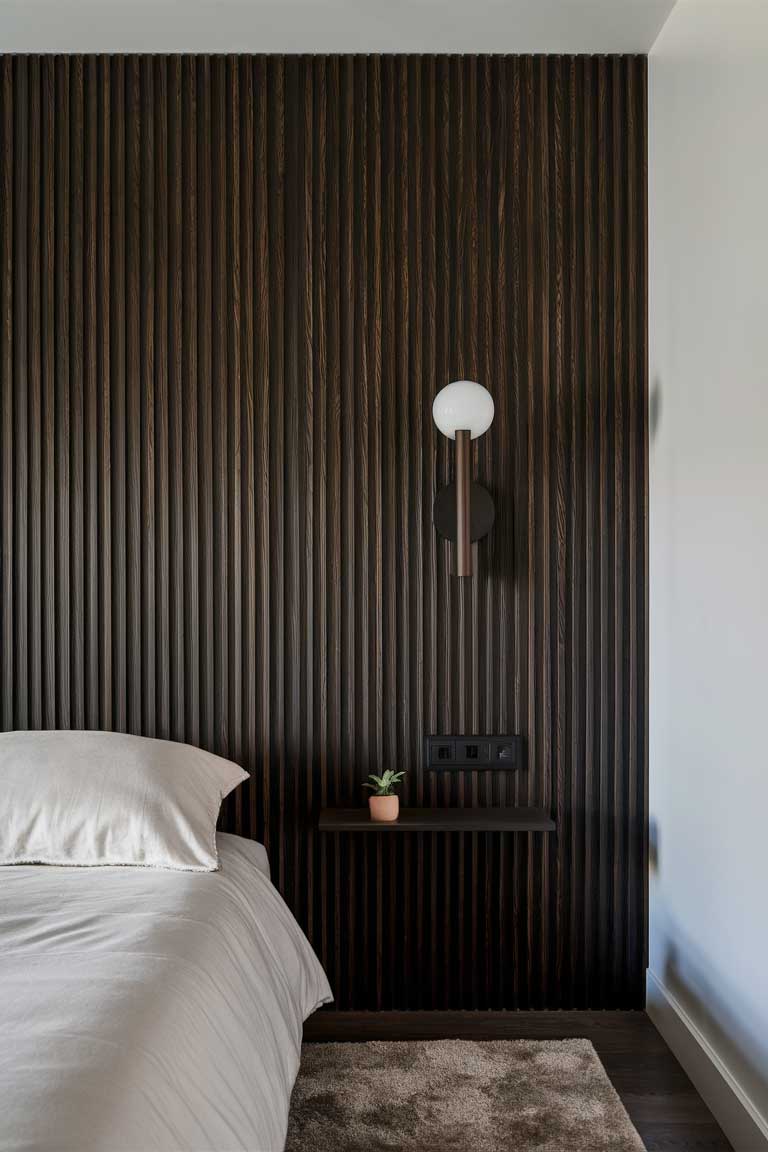
If wood slats aren’t your thing, consider painting your walls in deep, moody colors.
Charcoal, navy, and forest green all work beautifully in a Japandi dark wood bedroom, creating a cozy and intimate atmosphere.
Flooring
Several flooring options work well with the Japandi aesthetic.
Traditional tatami mats can add an authentic Japanese touch, while dark wood planks create a seamless look with your furniture.
To add softness and warmth, layer neutral-toned rugs over your hard flooring.
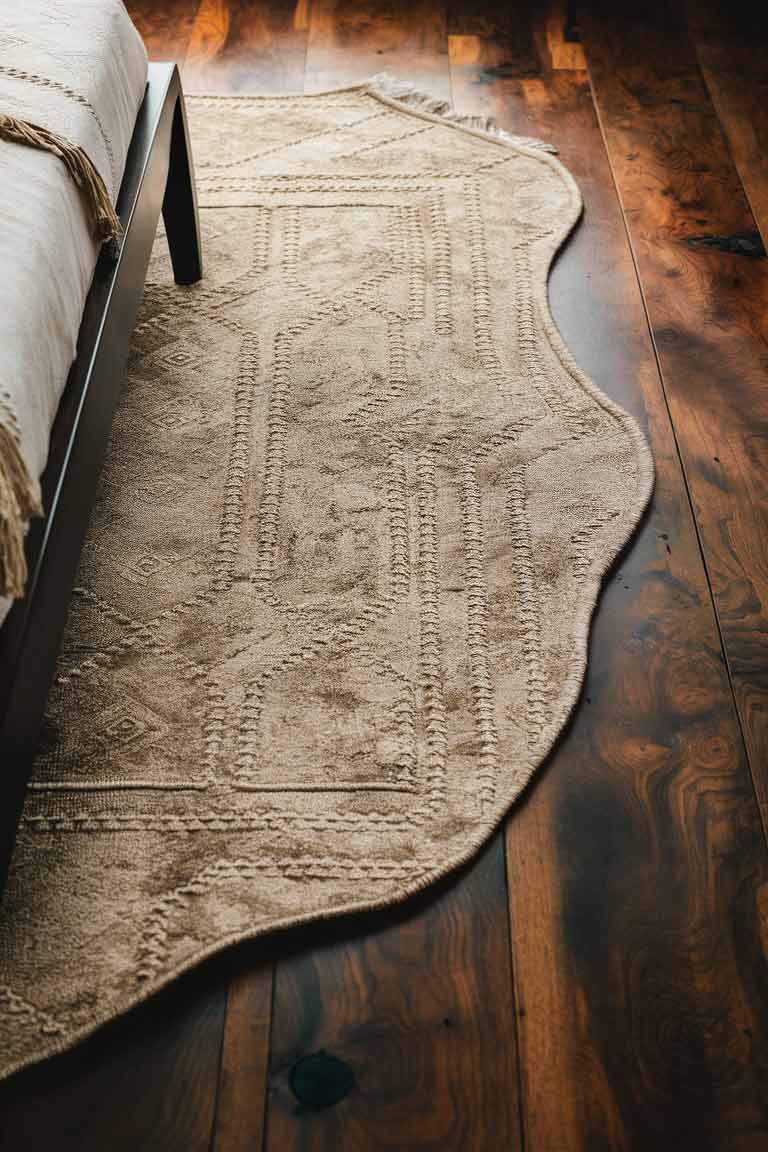
Incorporating Dark Wood Accents
Dark wood doesn’t have to be limited to your main furniture pieces.
There are plenty of ways to incorporate this rich material throughout your Japandi bedroom.
Ceiling Treatments
One often overlooked area for adding dark wood elements is the ceiling.
Exposed dark wood beams can add architectural interest and a sense of coziness to your space.
For a more modern twist, consider geometric wood paneling on the ceiling.

Decorative Elements
Small accents can go a long way in tying your Japandi dark wood bedroom together.
Think picture frames, shelving, handcrafted wooden bowls, or natural wood sculptures.
These elements add depth and interest to your space while maintaining that minimalist vibe.
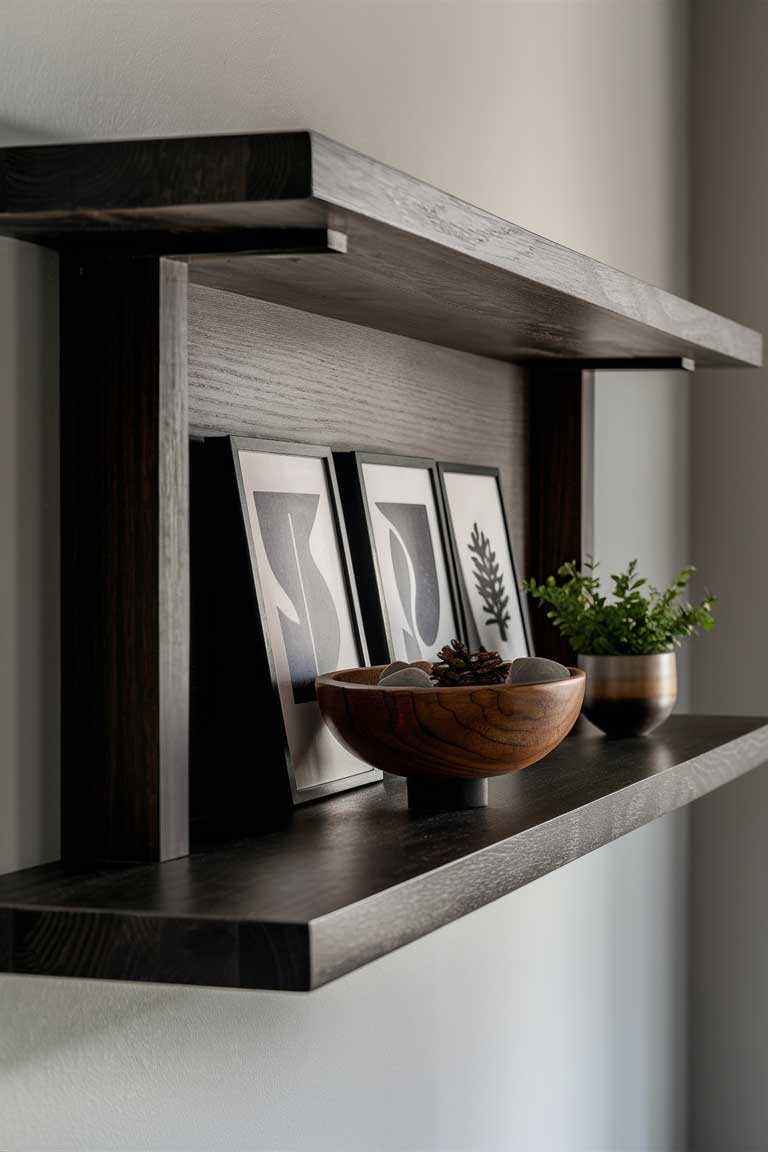
Lighting in Japandi Dark Wood Bedrooms
Lighting is crucial in any bedroom, but it’s essential in a dark and moody bedroom like the one we’re creating.
The key is to balance natural and artificial light sources to create a warm, inviting atmosphere.
Natural Light
Maximize natural light by using large windows with sheer curtains.
This allows sunlight to filter through, softening the dark elements in your room.
Strategically placed mirrors can also help bounce light around the space, making it feel brighter and more open.
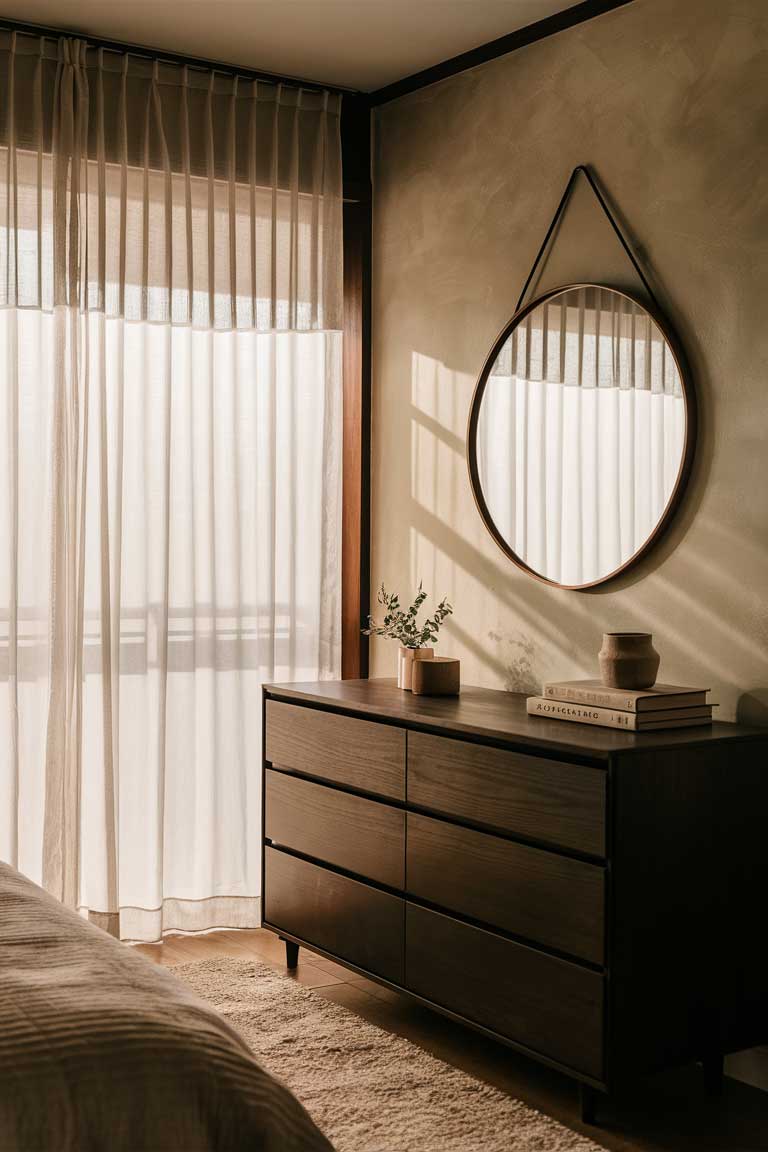
Ambient Lighting
Opt for warm, soft sources that create a cozy ambiance for artificial lighting.
Paper lanterns, as well as pendant lights made from natural materials, are great choices.
Wooden or rattan lampshades can add texture while diffusing light beautifully.
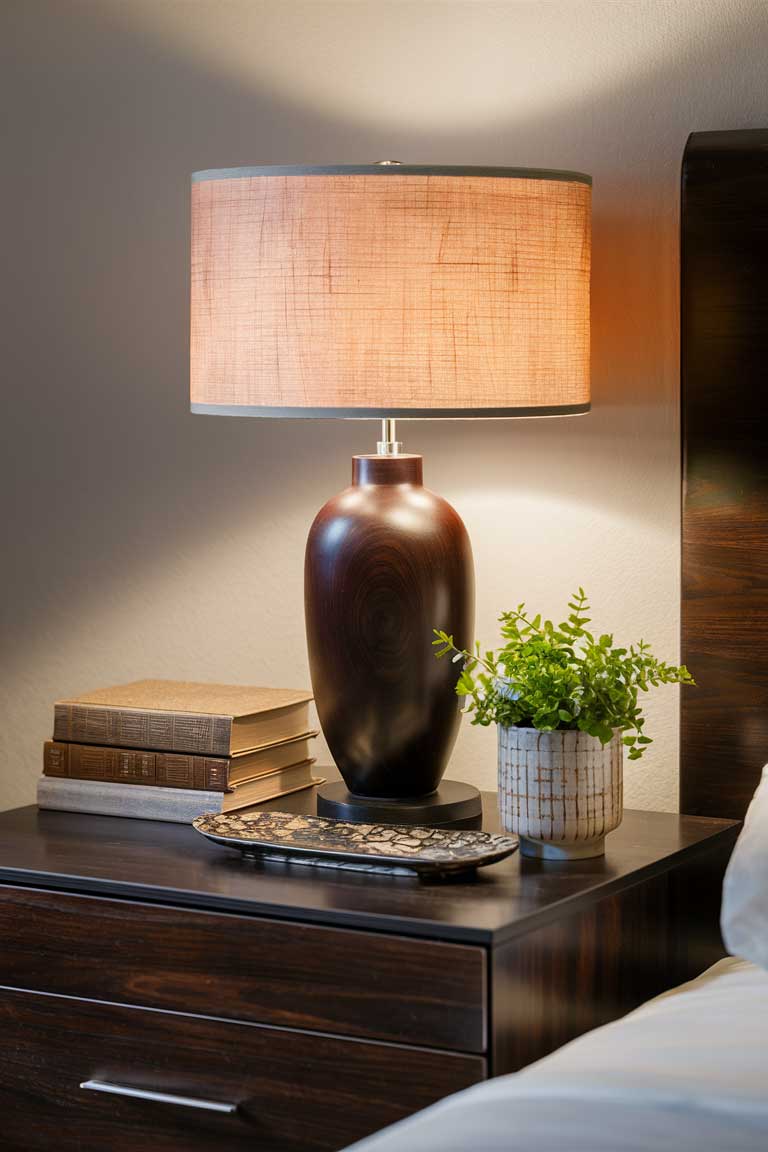
Textiles and Softness
Incorporating soft textiles throughout your Japandi bedroom is essential to balancing out the hardness of dark wood.
Bedding
Choose high-quality linens in neutral tones for your bed.
Layer different textures, such as crisp cotton sheets, a soft linen duvet cover, and perhaps a chunky knit throw for added coziness.
This mix of textures adds depth and interest to your bed without overwhelming the space.

Window Treatments
For window coverings, sheer curtains are a great choice as they allow light to filter through while still providing privacy.
Natural fiber blinds can also work well, adding texture and warmth to your windows.
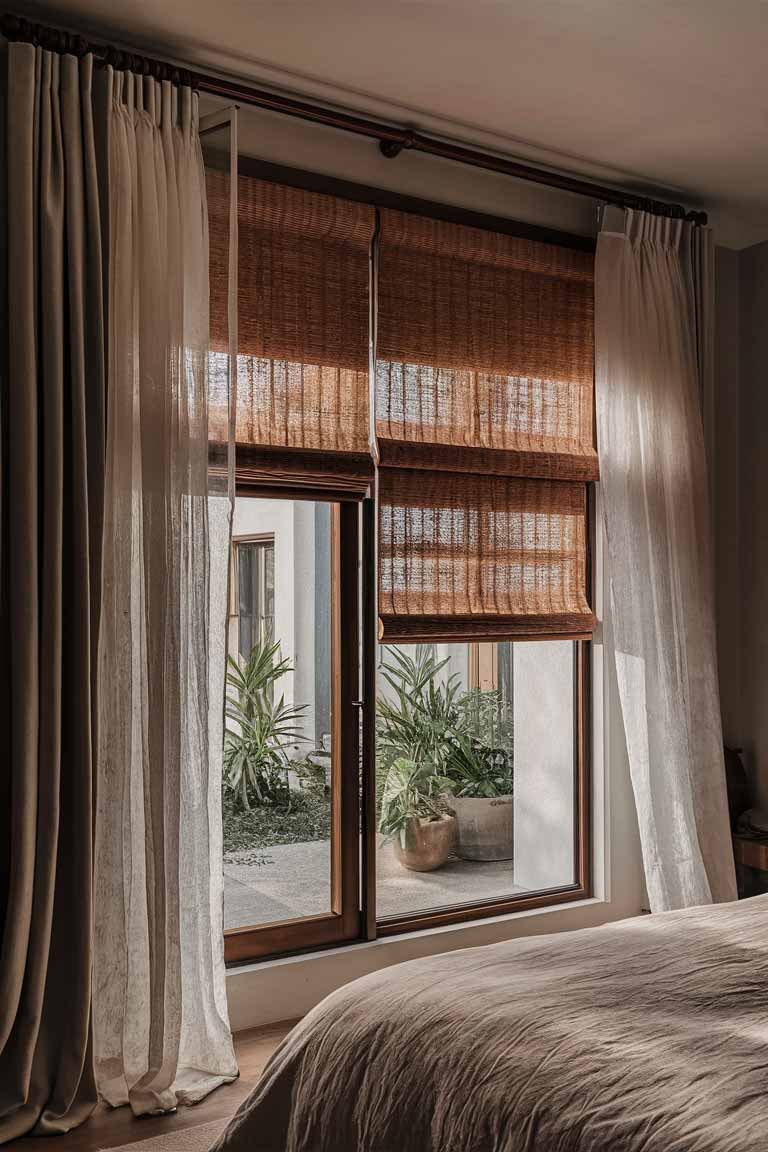
Balancing Dark Wood with Lighter Elements
While focusing on dark wood, balancing these deep tones with lighter elements is crucial to prevent the space from feeling too heavy or oppressive.
Contrasting Furniture Pieces
Consider incorporating a few lighter wood pieces or upholstered items in neutral tones.
This contrast can help highlight the beauty of your dark wood furniture while keeping the overall look balanced.
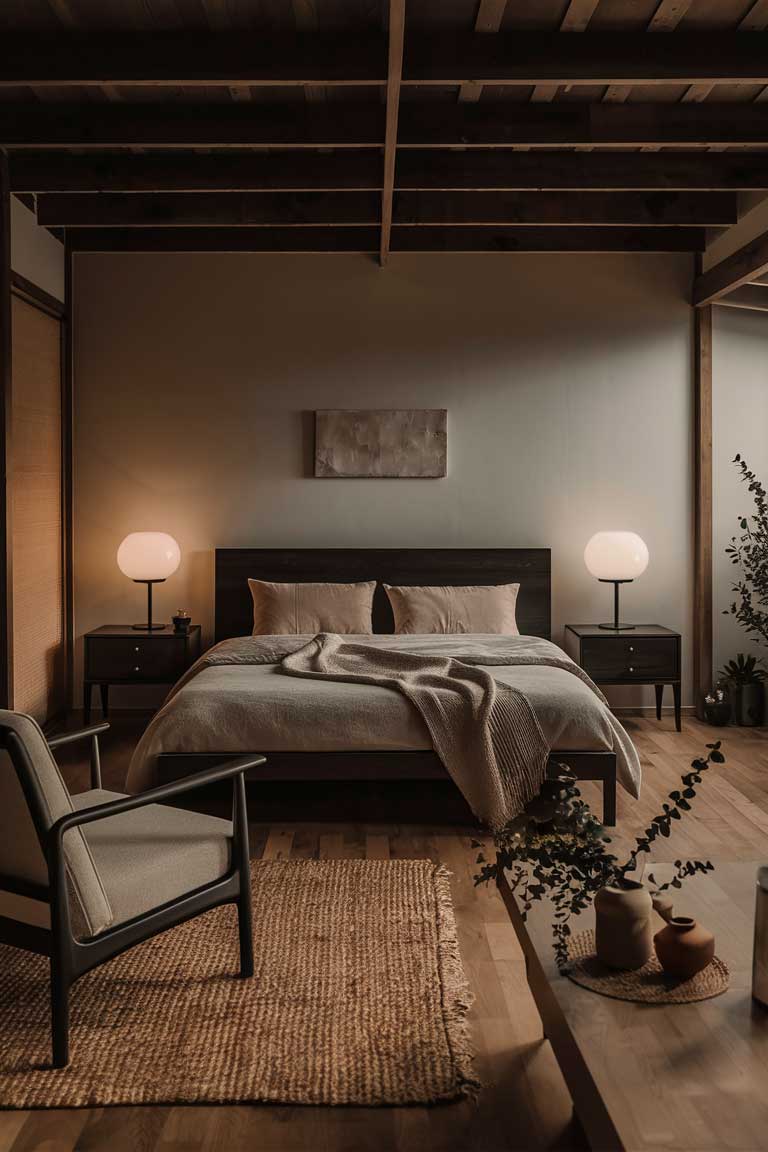
Wall Art
Large-scale abstract pieces or nature-inspired prints in light frames can add visual interest to your walls while brightening the space.
Choose art that complements your color scheme and adds to the serene atmosphere of your room.
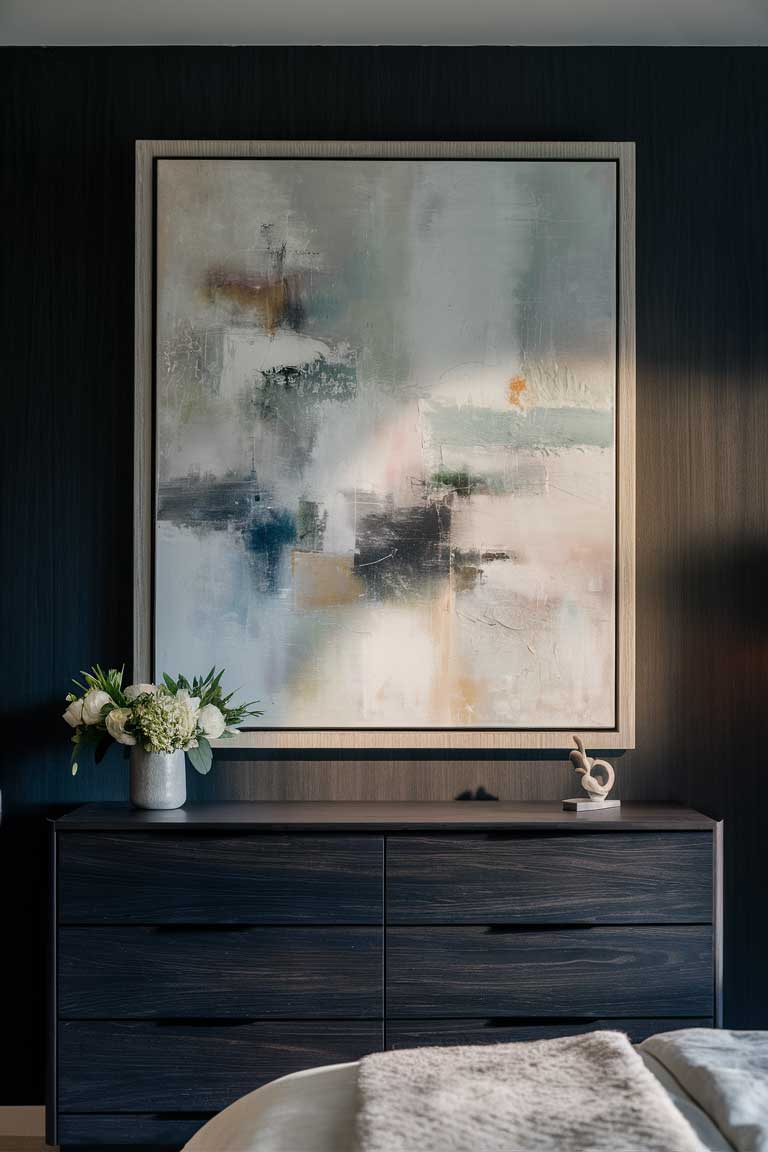
Japandi Dark Wood Bedroom Layouts
The layout of your bedroom is just as important as its individual elements.
In Japandi design, we aim for a balance of openness and coziness.
Minimalist Open Concept
Create a sense of space using integrated storage solutions that blend seamlessly with your walls.
This keeps clutter at bay and maintains that clean, minimalist look.
Consider multi-functional spaces, like a small work area that can be hidden away when not in use.
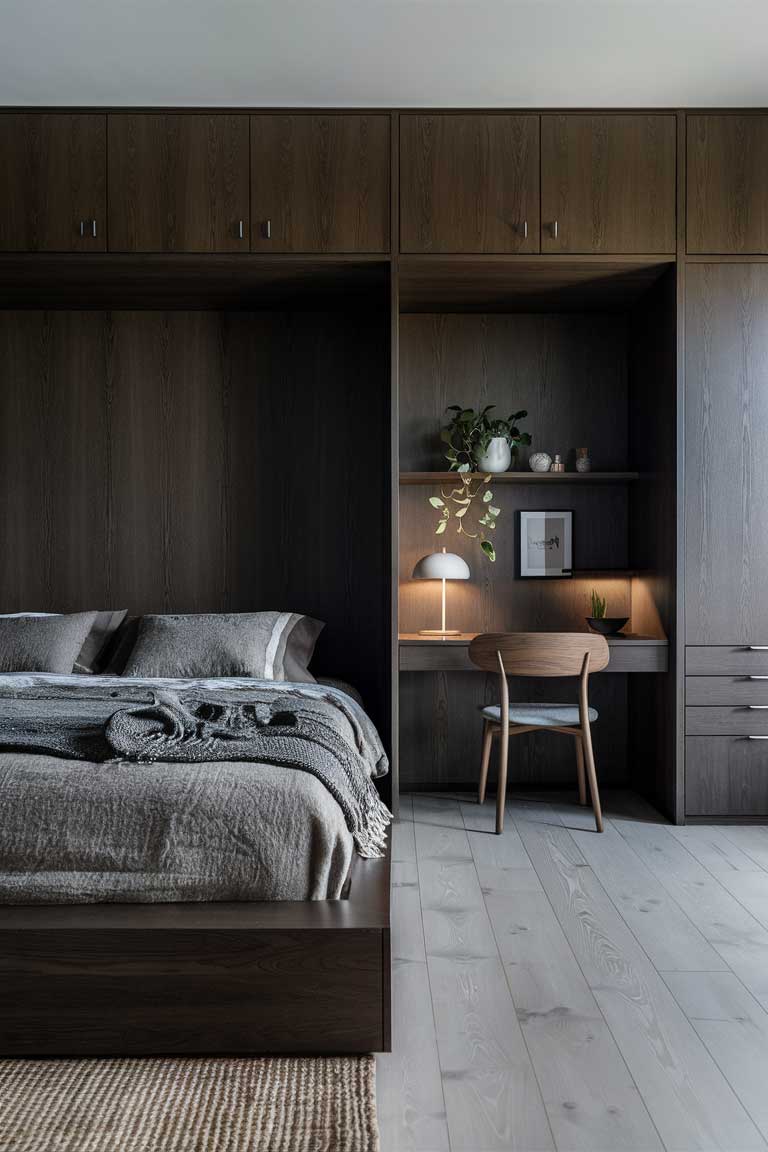
Cozy Reading Nooks
Carve out a cozy corner for reading or relaxation.
A low, dark wood chair paired with a small side table and a warm, focused light source can create a perfect little retreat within your bedroom.
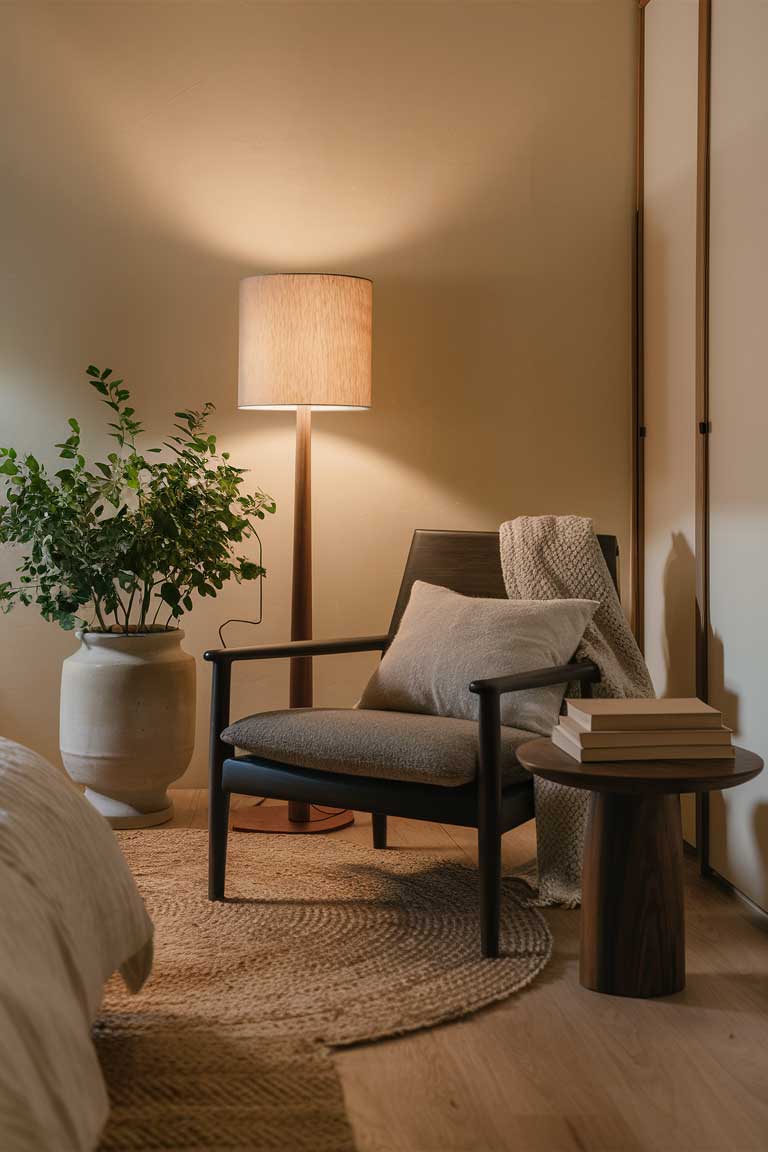
Bringing Nature Indoors
One of the key principles of Japandi design is maintaining a connection with nature.
This is especially important in a bedroom, where we want to create a calm, rejuvenating environment.
Plant Selection
Choose plants that thrive in low-light conditions and complement your dark wood furniture.
Tall plants like snake plants or fiddle leaf figs can add vertical interest, while smaller potted plants can soften shelves and dressers.
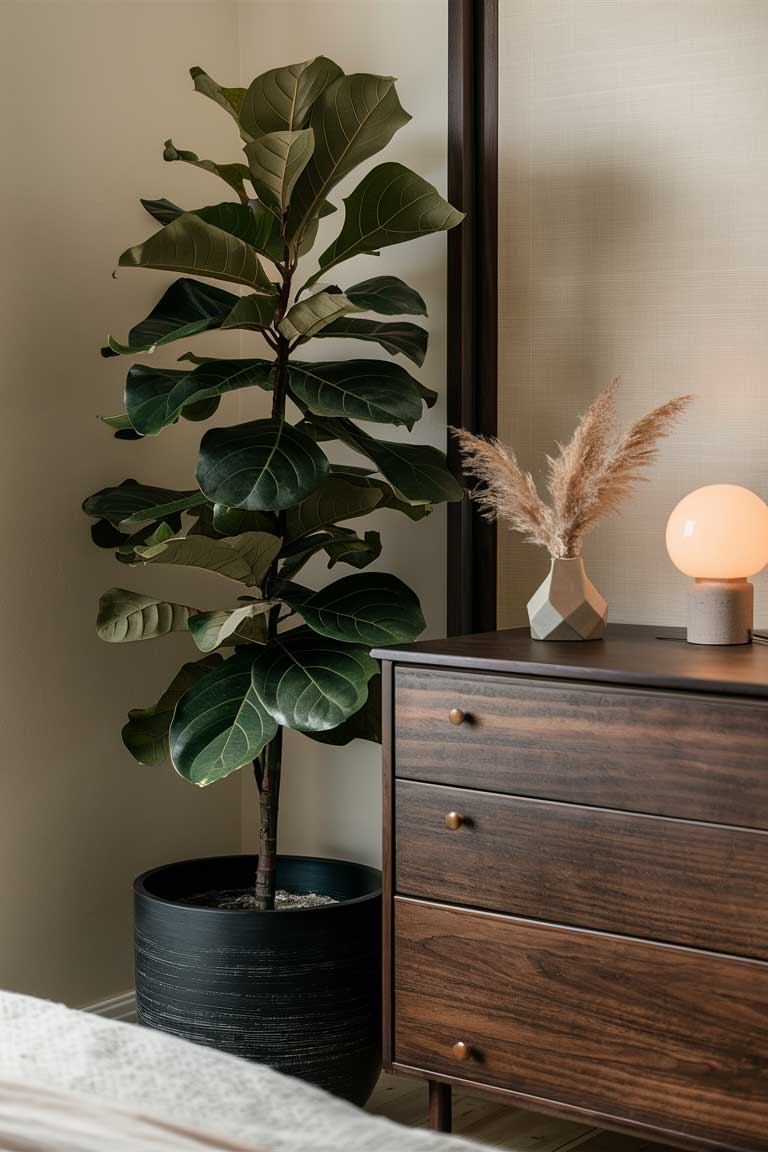
Natural Decor
Incorporate other natural elements like stone and bamboo accents.
A small Zen garden on your bedside table or dresser can add a meditative touch to your space.
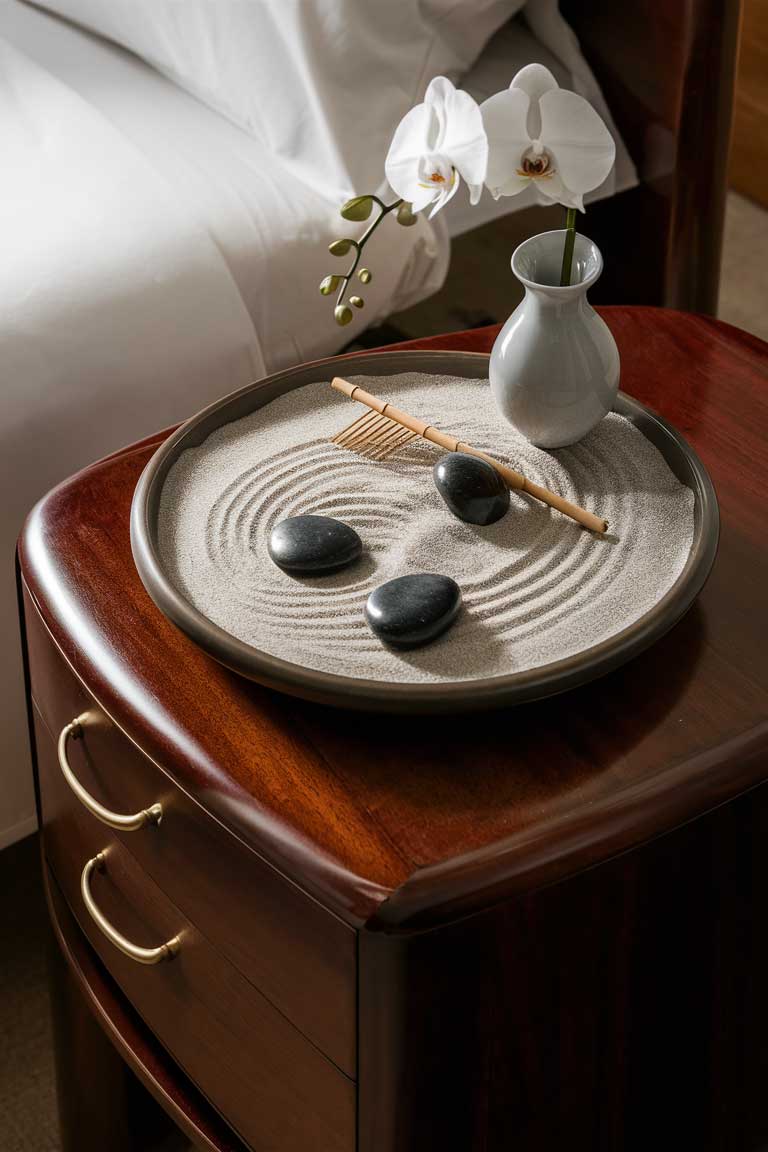
Personalizing Your Japandi Dark Wood Bedroom
While Japandi design favors minimalism, injecting some personality into your space to make it feel like home is essential.
Curated Displays
Create small, curated displays of meaningful items.
This could be a collection of travel souvenirs or family photos in simple frames.
The key is to keep these displays intentional and uncluttered.
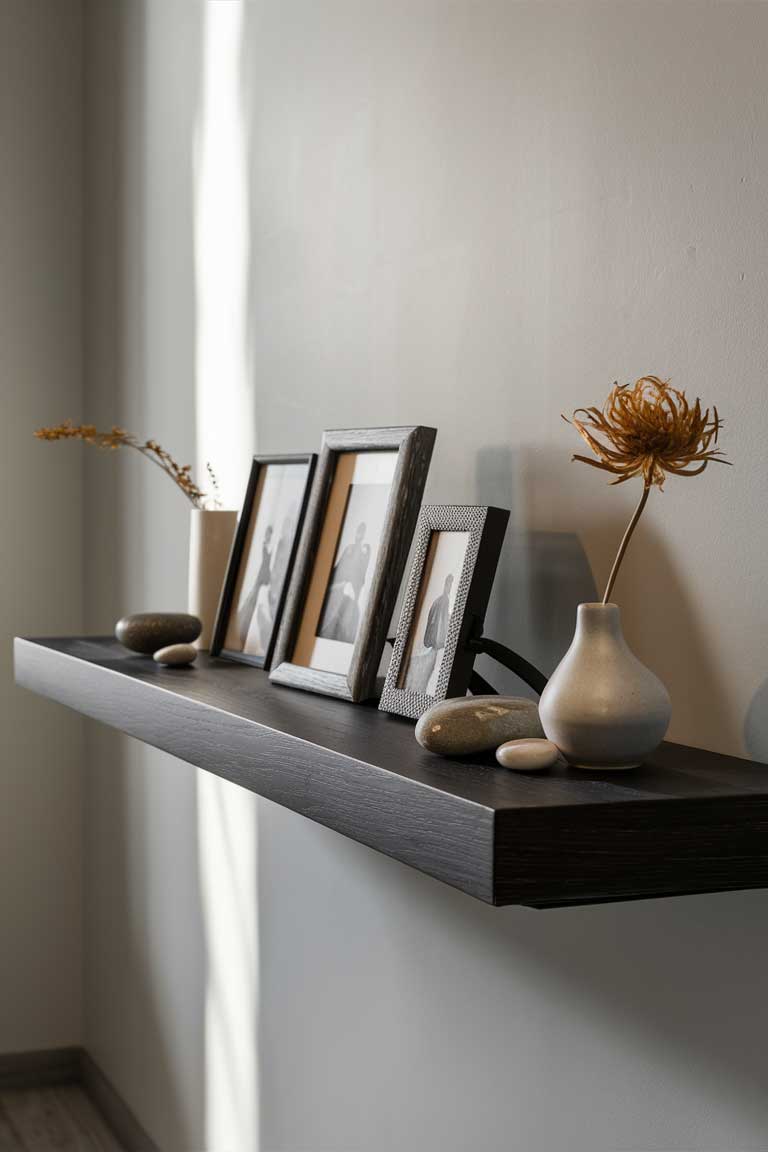
Wabi-Sabi Touches
Embrace the Japanese concept of wabi-sabi by incorporating items that celebrate imperfection.
This could be handmade pottery with subtle irregularities or a piece of aged wood with a beautiful patina.
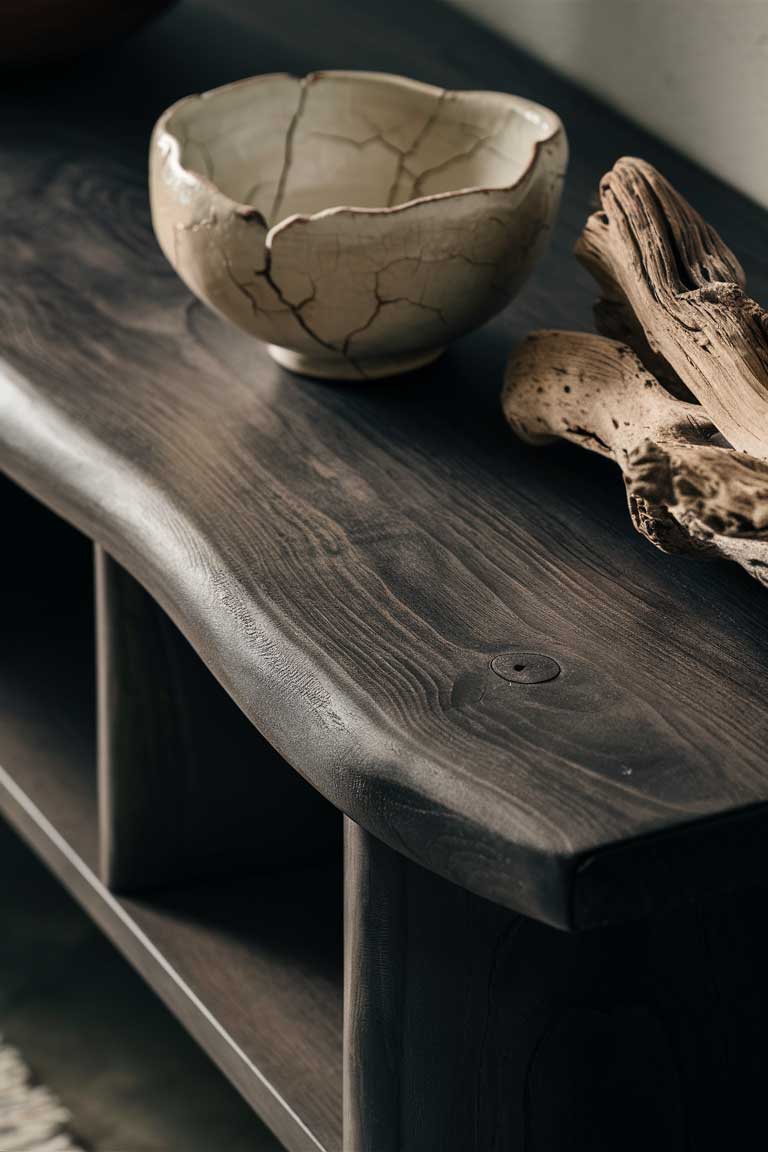
Conclusion
Creating a Japandi dark wood bedroom is about finding the perfect balance between the serene minimalism of Scandinavian design and the warm simplicity of Japanese aesthetics.
By incorporating rich, dark wood elements and balancing them with softer textures and lighter accents, you can create a sophisticated and deeply relaxing space.
Remember, the key to successful Japandi design is intentionality.
Every piece should serve a purpose, whether functional or aesthetic.
By carefully curating your space and paying attention to the interplay of dark and light, rough and smooth, you can create a bedroom that’s not just a place to sleep but a true sanctuary for rest and rejuvenation.
So go ahead, embrace the moody bedroom decor ofthe Japandi style, and transform your bedroom into a haven of tranquil sophistication. Sweet dreams!

